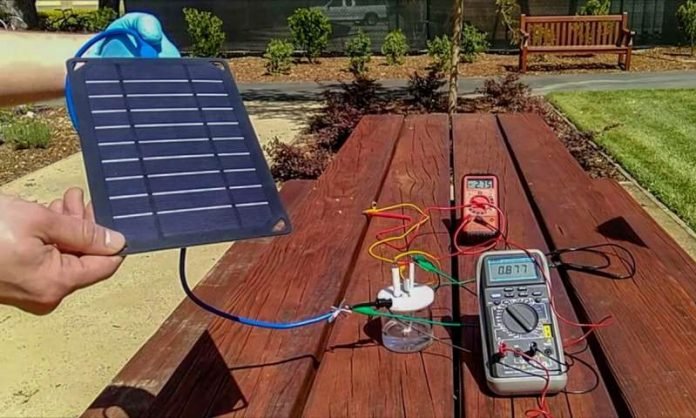
In a new study, Stanford researchers developed a new way to generate hydrogen fuel using solar power, electrodes, and saltwater from San Francisco Bay.
Hydrogen is an appealing option for fuel because it doesn’t emit carbon dioxide. This fuel could help solve climate change problems.
Splitting water into hydrogen and oxygen with electricity is called electrolysis.
When the power turns on, hydrogen gas bubbles out of the negative end, and breathable oxygen emerges at the positive end (anode).
But currently, water-splitting methods rely on highly purified water. Purified water is expensive to produce and a precious resource.
In seawater, without a negatively charged coating, the anode only works for around 12 hours in seawater.
Previous studies that tried to split seawater for hydrogen fuel had run low amounts of electric current because corrosion occurs at higher currents.
In the study, the team wanted to find a new way to use seawater to split water.
The researchers found that if they coated the anode with layers rich in negative charges, the layers would repel chloride and slow down the metal decay.
With this layer, it is able to work more than a thousand hours.
The team found they conduct up to 10 times more electricity through their multi-layer device. The device helps generate hydrogen from seawater at a faster rate.
They also designed a solar-powered demonstration machine that produced hydrogen and oxygen gas from seawater collected from San Francisco Bay.
The findings showed that the device matched current technologies that use purified water. This could greatly reduce the cost of splitting water.
The team suggests that their new finding shows a new way of separating hydrogen and oxygen gas from seawater via electricity.
They hope manufacturers to scale and mass produce the design.
One study author is Hongjie Dai, J.G. Jackson and C.J. Wood professor in chemistry at Stanford.
The study is published in Proceedings of the National Academy of Sciences,
Copyright © 2019 Knowridge Science Report. All rights reserved.



